Best Striped Bass Baits + Lures for Saltwater + Freshwater
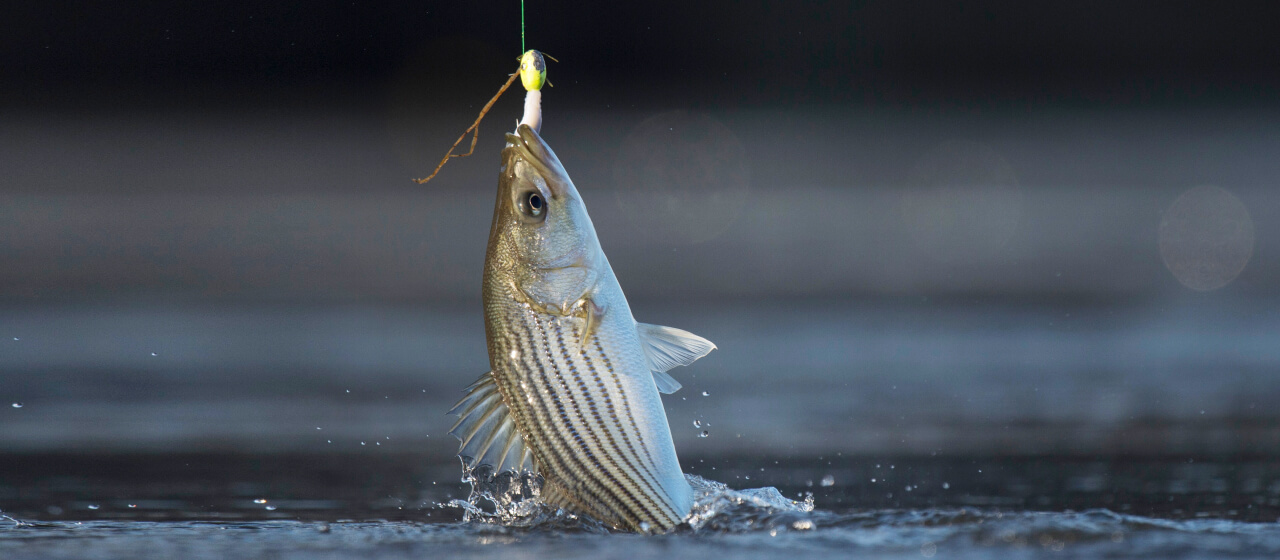
Looking for the best striped bass baits and lures to stock up on for your next fishing trip? There are plenty of options out there. To see success, you need the right variety so you never lose that big catch. Stay tuned to learn all you need to know about the 11 artificial lures for freshwater and saltwater stripers:
Best Bait for striped bass: Baitfish (shad, minnows, etc.), bloodworms/sandworms, crabs, eels, squid, bunker, mackerel
Best lures for striped bass: Kastmaster spoon lure, soft jerk shad, soft paddle shad, swimming mullet, hard mullet swimbait, floating minnow, bucktail jig, slashbait, flutter spoon, lipless crankbait, topwater pencil popper
What Are Striped Bass?
Striped bass are an iconic (and tasty) anadromous fish! Stripers naturally spend the bulk of their adult life in saltwater. However, they need freshwater to spawn in the spring (usually April to June) when the water temperature ranges between 60-68°F.You’ll hear anglers call them many things: striped bass, striper, linesider, and rockfish. Originally native to the Atlantic coast of North America, some states have stocking programs for certain landlocked reservoirs, rivers, or lakes. Striped bass can live as long as 30 years and grow up to about 100+ pounds when left alone to grow.
Common Striped Bass Characteristics
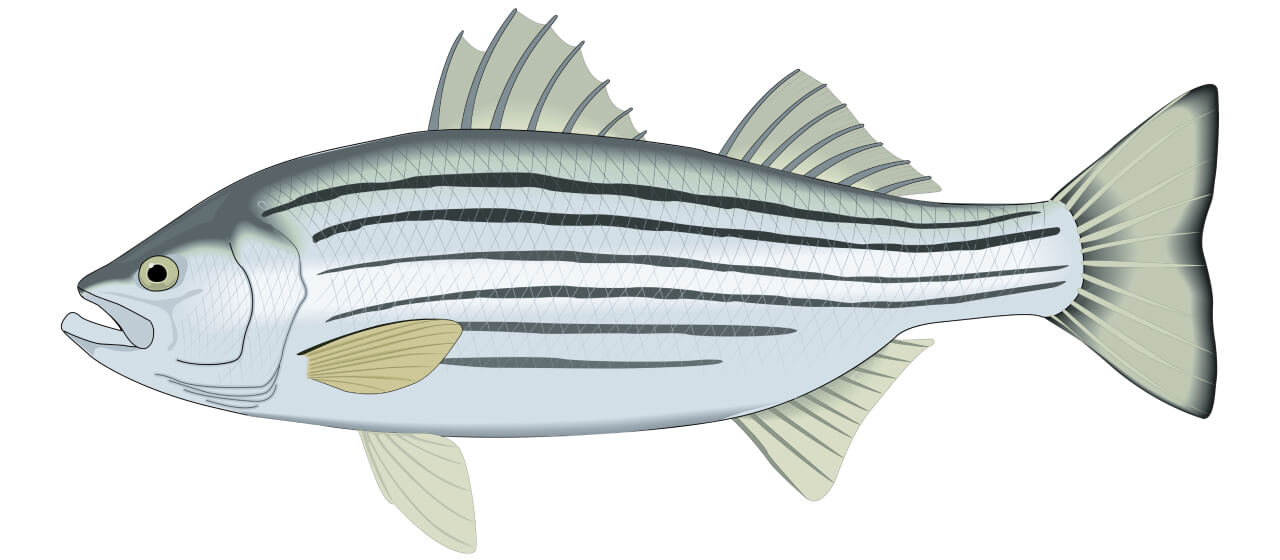
A striped bass’s standout feature is its eight or so dark horizontal stripes spanning from gills to tail. Hybrids also have these stripes. But they’re typically not a solid line like a striper’s.
The top of a striper’s body is darker in color — ranging from greens, browns, blacks, and blues — than its silvered or white belly.
They have wide bodies with a forked fin at the end and also have wide mouths.
Stripers have two separate dorsal fins. The first stands taller with between 8 and 10 separate spines. The second is usually shorter and softer with between 10 and 13 rays.
What Do Striped Bass Eat?
Striped bass are opportunistic predators that feed on prey smaller in size than they are. They typically eat any available fish or prey they can catch. However, their main diet consists of bait fish, anchovies, squids, worms, and crustaceans. What they eat greatly depends on their habitat and what’s naturally available to them.
Saltwater striped bass: Clams, mackerel, bunker, eels, worms
Freshwater stripers: Threadfin shad, alewives, gizzard shad, worms
Best Live Baits for Striped Bass
Stripers eat a variety of live baits. As long as your live bait is fresh and healthy, live or dead bait will attract a striper! Popular options include:
| Striped Bass Bait & Lures Chart | ||||
|---|---|---|---|---|
| Name | Time Most Active | Spring/Fall Depth | Summer/ Winter Depth | Best Lure To Mimic Bait |
| Baitfish (shad, etc.) | Sunrise or sunset | Shallow | Deep | Crankbait |
| Bloodworms & sandworms | Night (6 PM-6 AM) | Shallow bottom dwellers | Shallow bottom dwellers | Soft plastic worm baits |
| Crabs | Night (6 PM-6 AM) | Bottom dwellers in water up to 120 ft. | Bottom dwellers in water up to 120 ft. | Soft plastic crab baits or cut crab |
| Eels | Night (6 PM-6 AM) | Deep bottom dwellers | Deep bottom dwellers | Soft plastics |
| Squid | Night (sunset to midnight) | Shallow to mid-depth | Shallow to mid-depth | Squid baits and jigs |
| Bunker | Low light and pre-dawn | Shallow | Shallow | Spoons, jerkbaits, crankbaits, and live bait |
| Mackerel | Dawn and dusk | Surface to moderate depths | Surface to moderate depths | Spoons, jerkbaits, and trolling rigs |
Best Artificial Lures for Striped Bass
Striped bass can pose quite the challenge for the ill-prepared angler. That’s why you need the right types of artificial lures in your tackle box for the myriad of possibilities you’ll face on the water. You really only need a few quality lures suited for the water temperature and structure conditions in which you fish.
Saltwater Striped Bass Lures
Striper anglers will need to have dedicated saltwater fishing lures at the ready if they want to hook that prize lunker. Outside of spawning season, you’ll want to have your own combination of the following lures:
Kastmaster Spoon Lure
Why we chose it: Spoons mimic a myriad of baitfish. The flash and erratic action look like an injured or dying baitfish that is irresistible to stripers.
How to Use This: Spoons work best when fished vertically by letting them rise and fall at various depths or when trolled behind a boat.
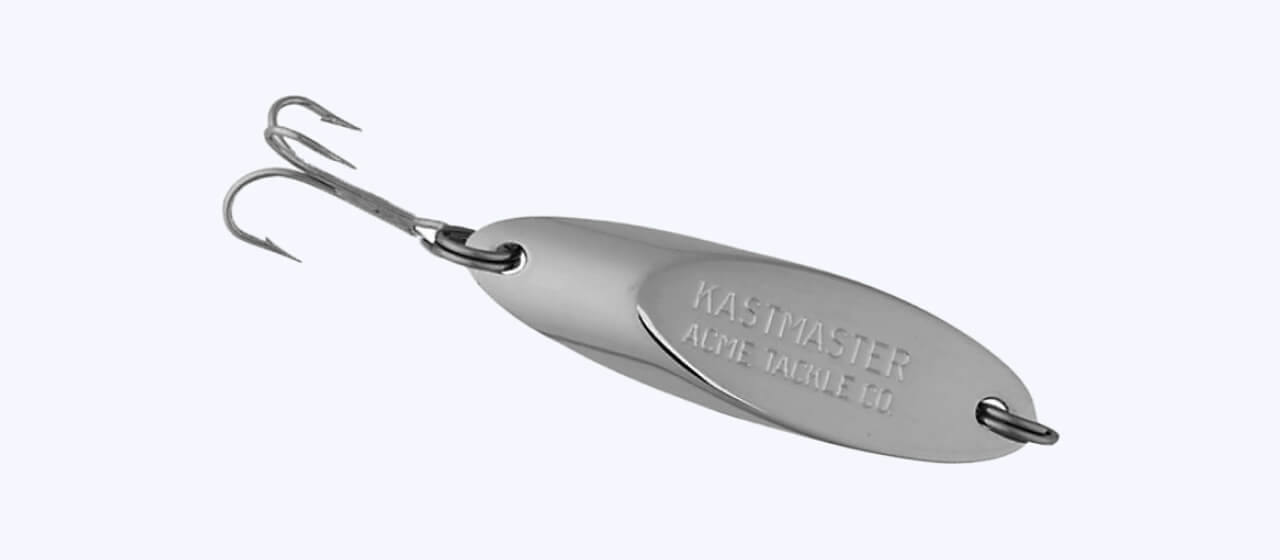
Key Features:
- Solid brass construction resists breaking, bending, and corrosion
- Aerodynamic design allows for long-distance casting
- Great for a wide variety of freshwater and saltwater species
Soft Jerk Shad
Why we chose it: These also mimic injured and dying baitfish. They can be fished fast, slow, or erratically depending on what the stripers are looking for.
How to Use This: Reel it in at various speeds with erratic twitches of your rod or hop it along the bottom or over grass flats.
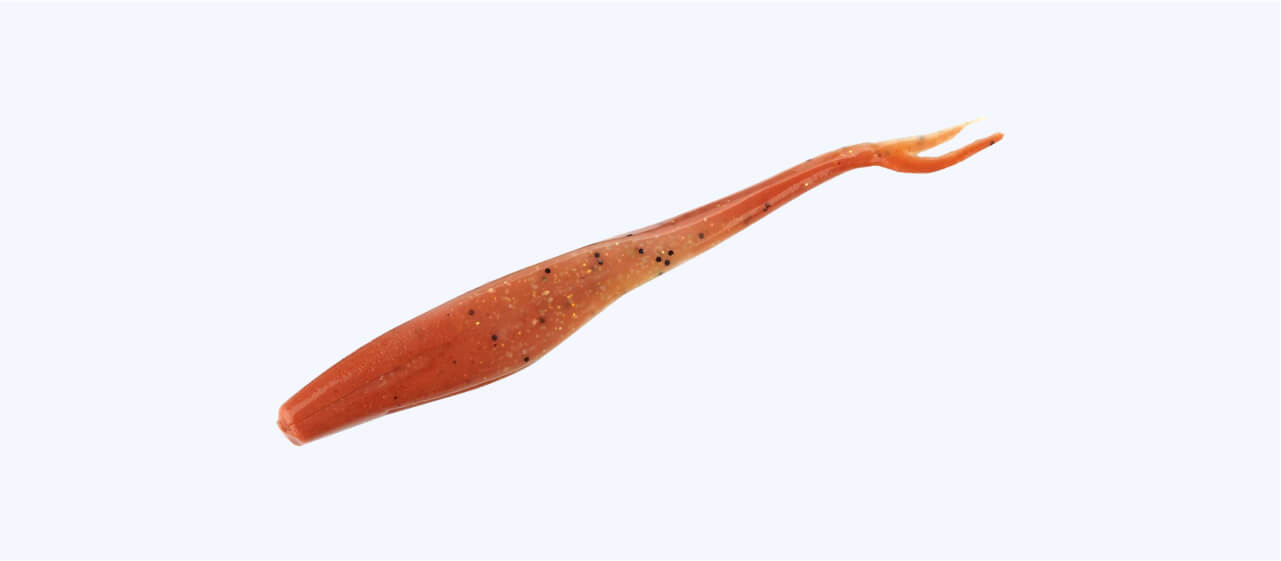
Key Features:
- Appearance of live baitfish attracts bites
- For use in saltwater fishing applications
- Includes five 6-inch shad baits
Soft Paddle Shad
Why we chose it: Swimbaits are jointed and hollow bodied to mimic the swimming motions of small fish and other prey animals.
How to Use This: Reel it in slowly to imitate the swim pattern of bass prey.
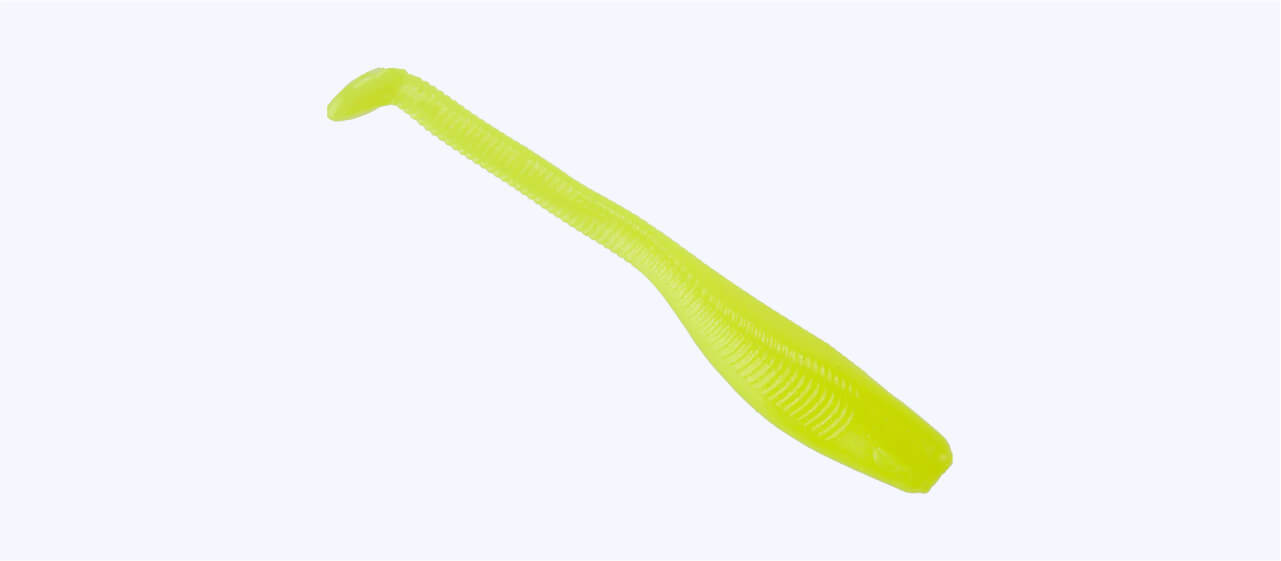
Key Features:
- Paddle tail movement is designed to attract redfish, sea trout, flounder, and more
- 4.5 inches long; Includes 8 lures
Gulp Swimming Mullet
Why we chose it: This bait mimics the swimming motion of a live baitfish to bring stripers near.
How to Use This: Since this is a curly tail bait, it creates realistic swimming motions for you, so all you have to do is cast it out and reel it in using a slow and steady retrieve.
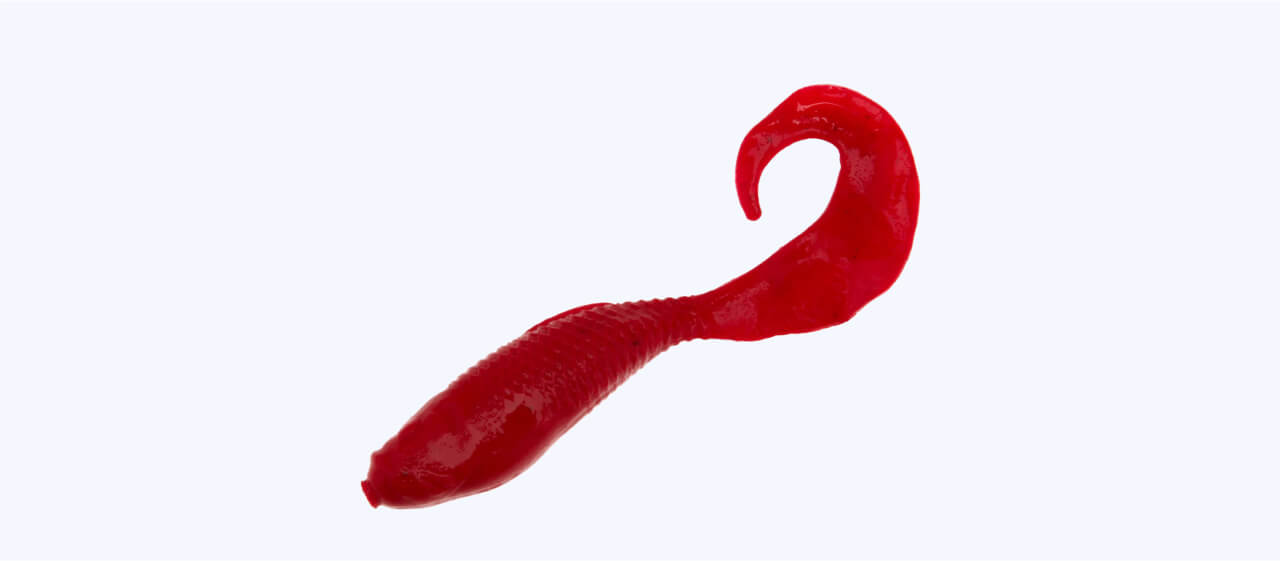
Key Features:
- Simulate the look of live baitfish to draw in fish
- Includes ten 4-inch baits
- For use in saltwater fishing applications
Hard Mullet Swimbait
Why we chose it: This bait most closely imitates mullets in size, shape, and color.
How to Use This: If you can find a school of mullet, the best way is to reel this right through the middle of them with pauses and erratic jerks to make it look as though it is dying.

Key Features:
- Small finger mullet design with a jointed body and 3-D eyes provides a realistic appearance
- Slow sinking action
- VMC Saltwater size 4 treble hook
- 1/4-ounce weight; 3.5 inches long
Floating Minnow
Why we chose it: Great for mimicking minnows in size, shape, and color, and also mimics the darting action of minnows well.
How to Use This: These are jerkbaits that work best when reeled in quickly to the correct depth and fished with quick jerks and pauses to spur strikes.
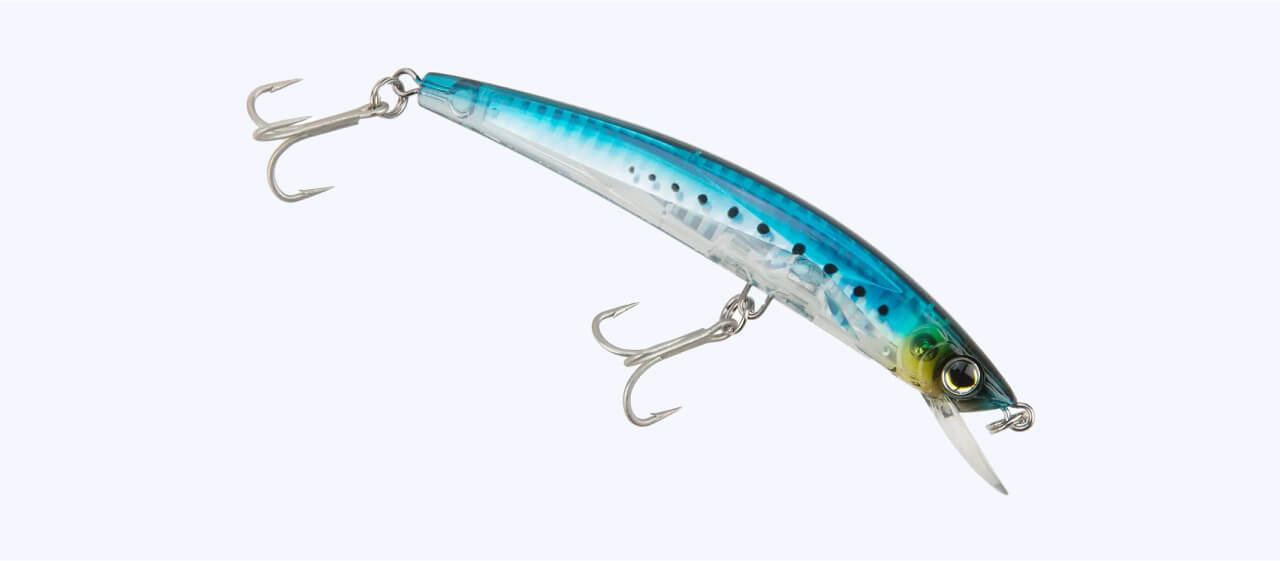
Key Features:
- Ultraviolet colors with a 3-D prism finish provide a realistic appearance to draw the attention of fish
- Balanced weight inserts near the belly hook act as an attack point to help secure your catch
- 5.25 inches long
Freshwater Striped Bass Lures
Some states have stocked striped bass in large lakes, rivers, and reservoirs intentionally since the 1940s to increase local fishing opportunities. Freshwater striped bass spend most of the year in the body of the lake. But they will swim into inlets and streams to spawn. Catch your next striper with these artificial lures:
Bucktail Jig
Why we chose it: The lifelike white baitfish design is made to glide through the water while staying parallel to attract stripers.
How to Use This: Bucktails can be cast, trolled, or jigged with equal performance.
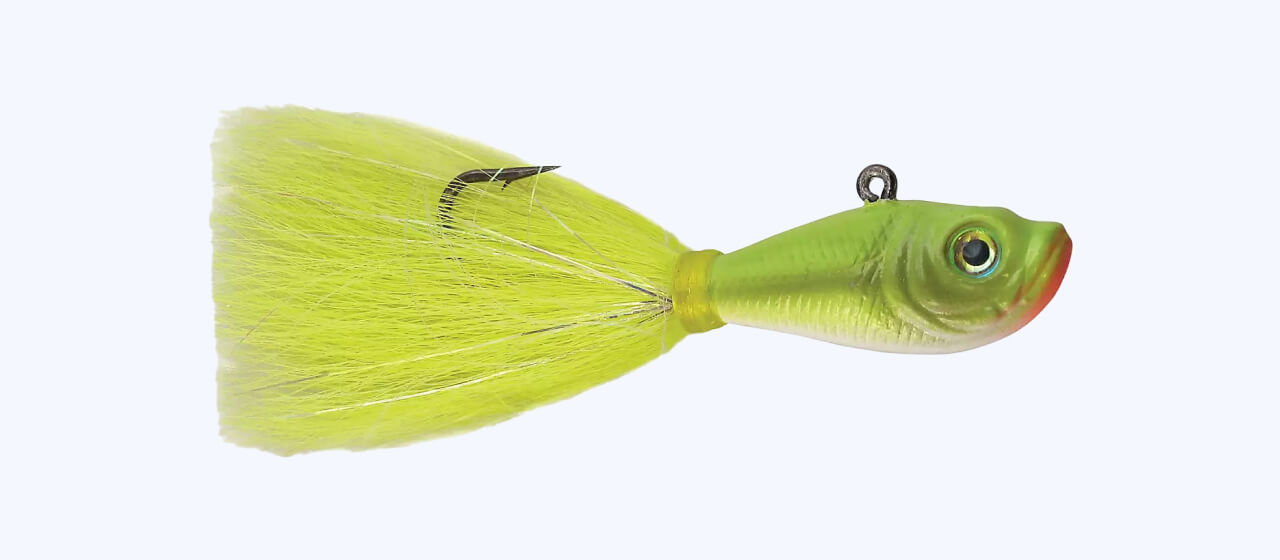
Key Features:
- Head shape and eyelet placement create an attractive appearance and gliding action
- Sinking design to help it avoid hanging straight down or falling
- 1/2-ounce weight
Slashbait
Why we chose it: This bait features a combination of rolling, wiggling, and flashing to attract stripers in freshwater areas.
How to Use This: Use a quick jerking action with your rod, combined with a fast reeling motion for best results.
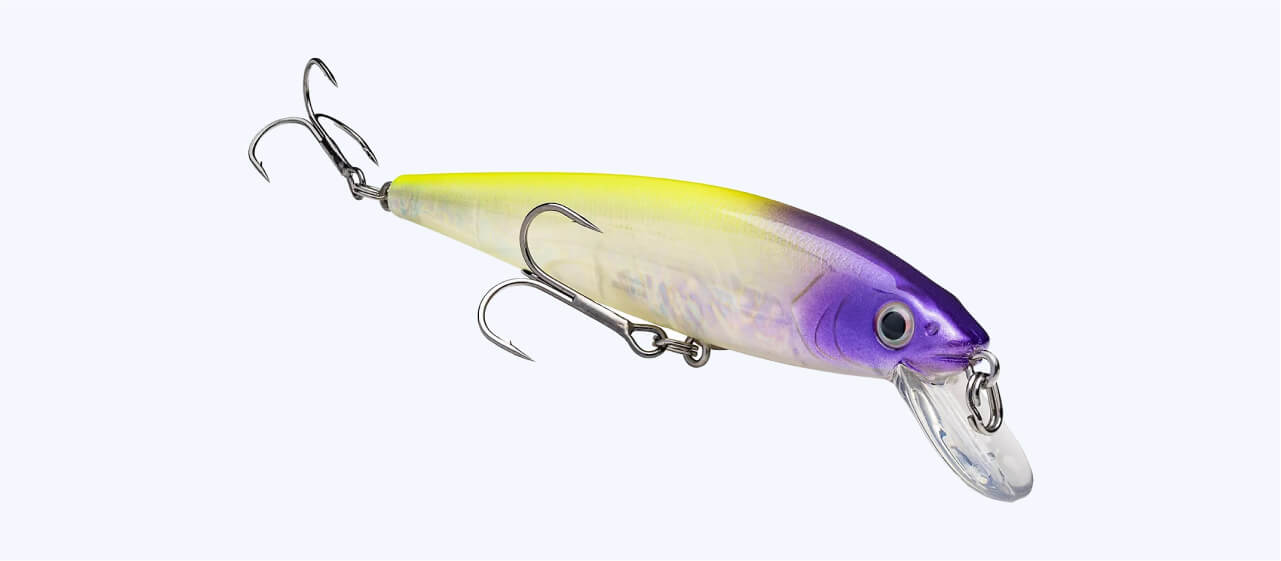
Key Features:
- Weight transfer system promotes castability
- 3-D eyes provide a realistic appearance
- 2 No. 4 nickel premium treble hooks
- Weighs 0.5 ounces; 4.5 inches long
Flutter Spoon
Why we chose it: This spoon provides a natural fluttering action that mimics a dying shad to attract stripers to bite.
How to Use This: Spoons are versatile and can be trolled, cast, or fished vertically over structure. They can also be fished throughout the entire water column.
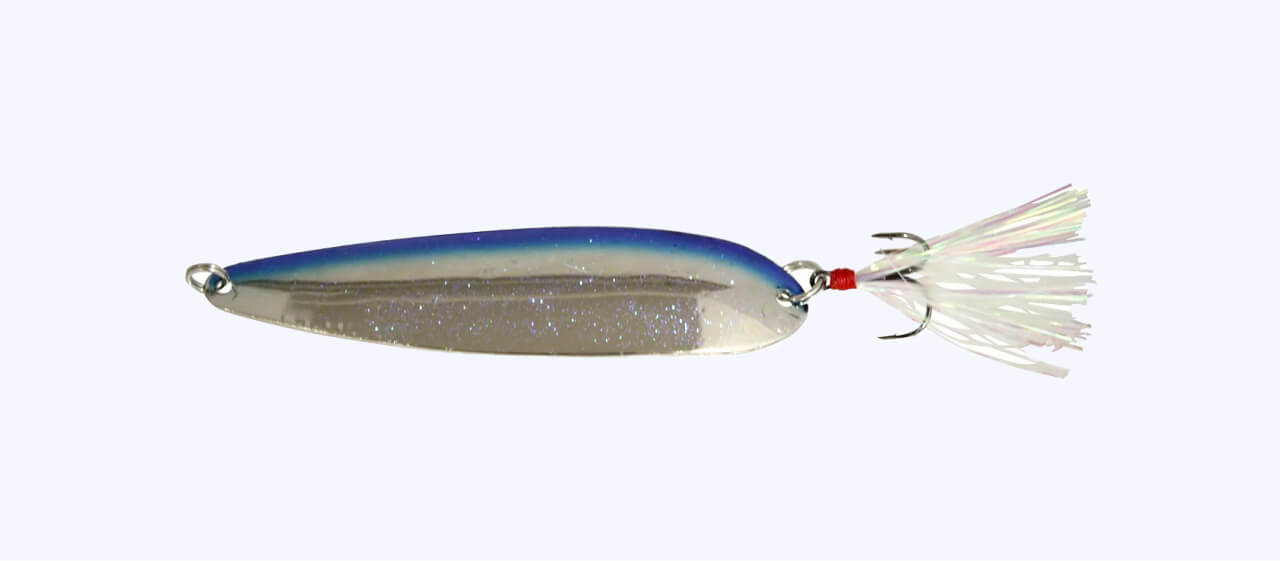
Key Features:
- Can be fished on a limp or slack line and has a treble hook
- Helps lure in a variety of fish, especially freshwater bass
- Weighs 3/4 ounce; 4 inches long
Lipless Crankbait
Why we chose it: This lure uses internal rattles to imitate the sound of schooling baitfish under attack to attract predators like stripers.
How to Use This: Lipless crankbaits can be retrieved straight for a wobble and ripped through the water for aggressive vibration.
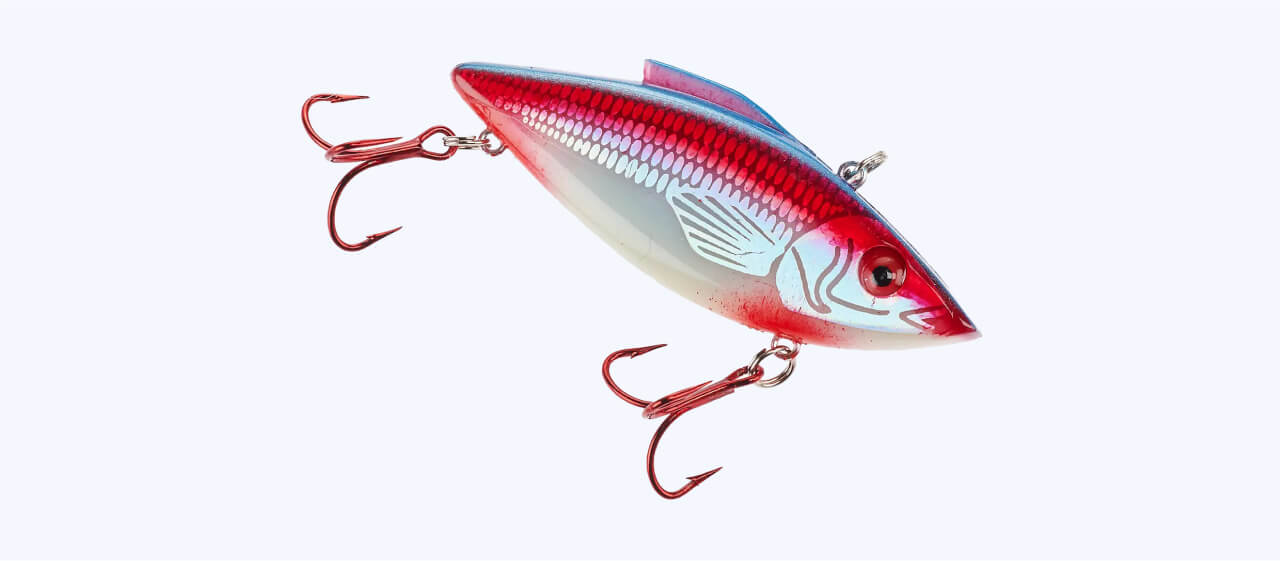
Key Features:
- Lipless design covers the water quickly and effectively
- Two #5 Set-Lok treble hooks
- Ideal for catching bass and other freshwater species
- Weighs 1/2 ounce; 2-7/8 inches long
Topwater Pencil Popper
Why we chose it: This floating topwater lure "walks" along the top of the water with a side-to-side walking action and an internal cadence rattle to get the attention of fish.
How to Use This: Topwaters can be dragged through the water to mimic injured prey, but anglers can enhance the motions by twitching and jerking their rod.
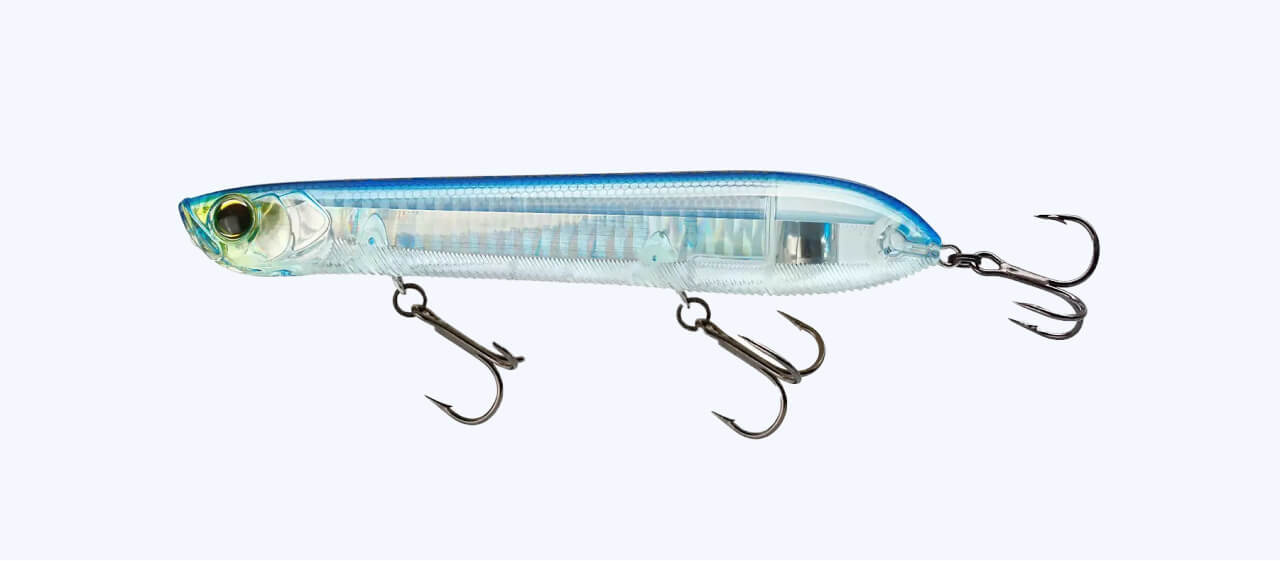
Key Features:
- 3-D Internal Prism reflects light in all directions for added visibility
- Able to cast long distances, even into a strong wind
- 3 hooks to secure your catch
- 5 inches long; 1-ounce weight
Artificial Scents

Why We Chose This: Fish attractants can be a powerful secret weapon when the stripers just aren’t biting. While many anglers might tell you otherwise, there’s certainly a time and place for using these artificial attractants for striped bass.
- Stick to bunker or other baitfish scents for the best results for stripers.
- Fish attractants aren’t a guarantee or a miracle product. Just like any lure, you should use them strategically or as you experiment on the water.
- Striped bass can smell better than they see. They may be the difference for a productive fishing trip.
How to Use This: Start by using gels for soft plastic baits and pastes for hard lures. You might prefer something different, but you can use this as a guideline to help you buy the right attractant. Simply apply your scent of choice to whatever lure you intend to use and cast away!
Striped Bass Bait By Season
Are you looking for a great year-round fish to learn about and catch? Striped bass are a fantastic choice! You should know the key months of each season, though. Having this knowledge at your disposal can help you learn which lures to take with you.
| Seasonal Striped Bass Bait Guide | |||
|---|---|---|---|
| Season | Best Months To Fish | Best Bait To Use | Typical Fish Behavior |
| Spring | Early March to mid-May | Artificial lures like topwaters | Active and hungry, breeding time |
| Summer | Late May and June | Live bait or cut bait | Seeking cooler water in deep ocean waters on reefs and ledges |
| Fall | Early fall into November | Lipless crankbaits or topwater lures | Slower, hiding in stumps and brush |
| Winter | December and early January | Dead bait, spoons, or jigs | Slow and sluggish, feeding infrequently; in schools |
Striped Bass in the Spring
Early spring is usually slower for catching striped bass. While the water is still quite cold, the water temperatures do rise — as will your chances of catching a striper!
Striped bass breed in the late spring and are very active and hungry afterward.
They attack and eat large schools of fish. Cast your lure or bait into these schools to maximize your chances of reeling in a striper.
Expert Tip:
In the warmer months of spring, fish for striped bass in the early morning or late afternoon when the water is cooler.
Striped Bass in the Summer
Stripers seek out cooler depths as water temperatures continue to rise. They prefer water temperatures around 55-68°F.
They do sometimes feed in shallower water for short periods.
Maximize your chances by going into deeper areas over reefs and ledges using live bait or fresh-cut bait.
Expert Tip:
Fishing for striped bass in summer is best done at night when it’s dark and there’s little moonlight because stripers are very light-shy.
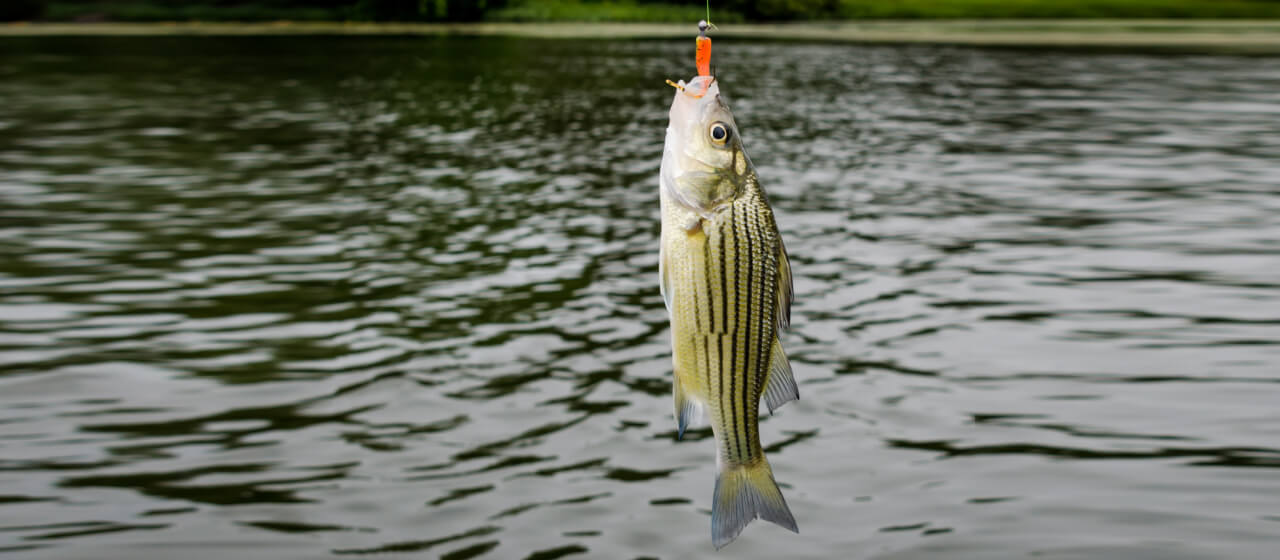
Striped Bass in the Fall
While striped bass do slow down in fall time, they still actively feed to prepare for a long winter.
Early fall months are similar to summer. Fish in the cooler parts of the day like early morning and late afternoon.
As the water temperature drops, fish during the warmer parts of the day and in the middle of the lake for the best results.
Expert Tip:
Artificial lures like lipless crankbaits and topwater lures yield successful results in the fall season as the water temperatures change and stripers move around the water column.
Striped Bass in the Winter
Striped bass become sluggish during the winter. But that doesn’t mean they don’t eat! Target them at the hottest time of day when they feed.
You’ll most likely have to use a fish finder to locate schools of fish or structures to target.
Expert Tip:
No fish finder? No problem! Just watch for seagulls or other birds swooping down toward the water. You’ll likely find where the schools of fish hide.
Where Are Striped Bass Found?

Striped bass are traditionally found along the Atlantic Coast: from Canada down to Florida. However, they’re most popular north of South Carolina. Nowadays, though, you’ll also find them inland and on the west coast.
Best Freshwater Striper Fishing Spots
Lake Texoma
Lake Tawakoni
California Delta
Beaver Lake
Lake Cumberland
Smith Mountain Lake
Lake Powell
Lake Murry
Best Saltwater Striper Fishing Spots
Cape Cod
Martha’s Vineyard
North Carolina (Outer Banks)
Virginia (Virginia Beach)
Massachusetts (Gloucester, Nantucket)
New York (Montauk)
Maryland (Ocean City)
Frequently Asked Questions
What’s the difference between striped bass vs white bass vs hybrid striped bass?
- Striped bass: Stripers have multiple distinct, solid, and horizontal stripes that reach their tail. More importantly, these lines don’t have any breaks or disruptions. Its body is long and slender.
- White bass: White bass are smaller in size compared to striped bass. Beyond that, white bass only have one stripe that extends to their tail. The other lines may come close, but they’ll be faint or fade off.
- Hybrid striped bass: Also called wipers, they have hardier bodies than stripers. They do also have lateral stripes, but these fainter lines aren’t a solid line from gills to tail. Wipers don’t usually get as long as a striper; however, they are stocky or thicker than them.
Are striped bass good to eat?
Yes! Striped bass are popular among anglers and have delicious white, flaky, and buttery flesh. They have a mild, delicate flavor without any fishiness — similar to cod or halibut.
When do striped bass spawn?
Striper spawning happens in late Spring — generally in April, May, and early June. An increase in water temperature prompts their spawning as water temperatures reach 60-68°F. They will migrate from saltwater to freshwater to spawn.
Have Fun Out There!
Now that you’re familiar with the different types of bait to use for striper angling, head to the fishing gear shop at Academy Sports + Outdoors and stock up. You can also check out our other expert fishing articles:
Looking to catch a prized hawg? Learn all about the best baits and lures for bass!
Want to brush up on walleyes? Use these best baits and lures before you head out.
Excited for a tasty challenge? Catch your next catfish with these best baits and lures.
Bring home the biggest red drum of the day! Use these best baits and lures for redfish.
Reel in a nice speckled fish. Catch your next crappie with these baits and lures.
Ready to catch your next rainbow trout? Don’t forget these best baits and lures!
Looking to stock your lake trout tackle box? You can’t miss these best baits and lures.


